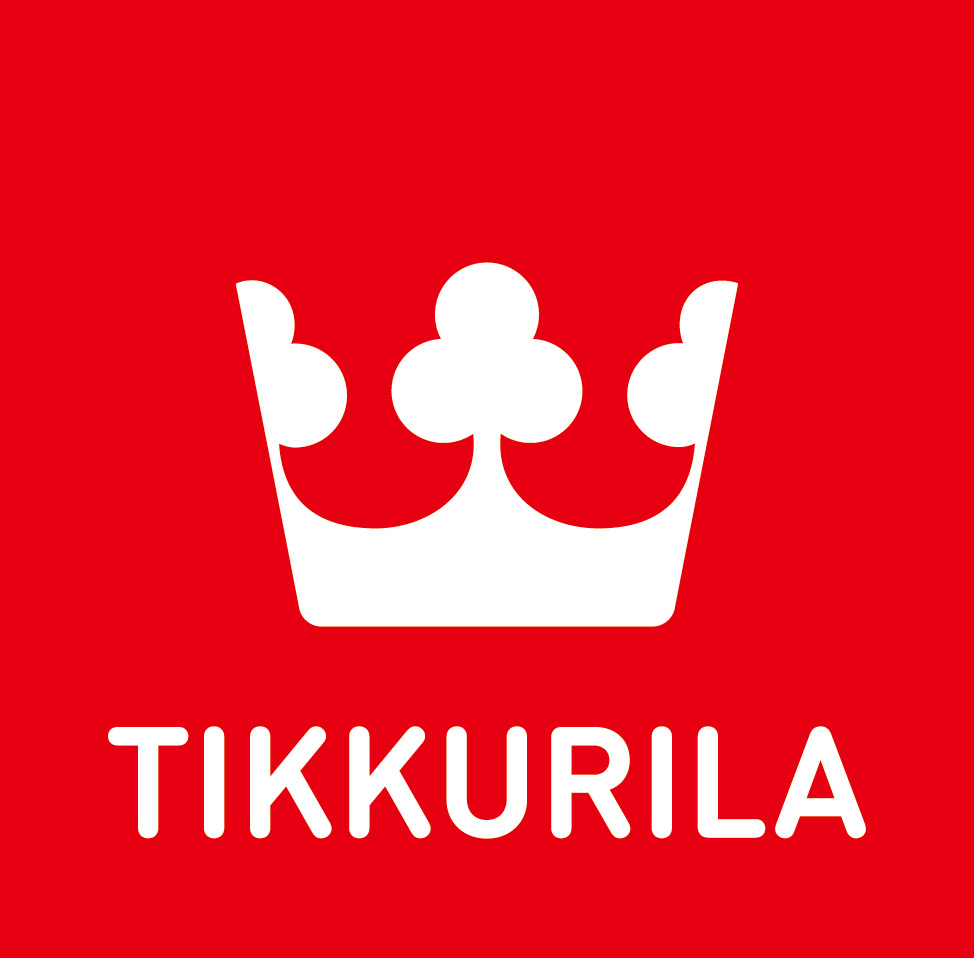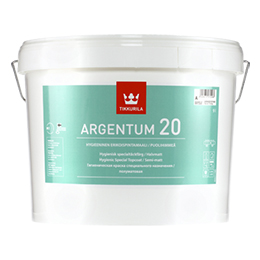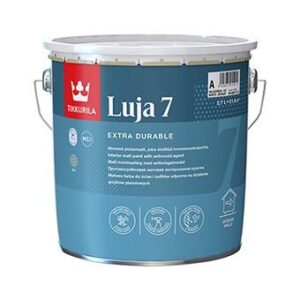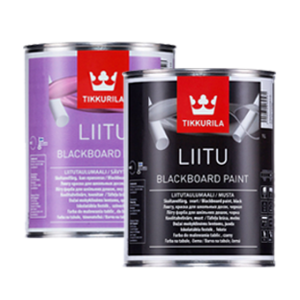Description
|
DESCRIPTION Special surface paint for wall and ceiling surfaces that require a high level of hygiene. The product contains active silver as an effective agent that will prevent the growth of bacterial strains on the painted surface together with good hygiene. The product has been tested according to standard ISO 22196 with an exposure time of 24 hours. |
|
| Note: The price(s) shown above is (are) for white paints only. A tinting fee is charged for paints of other colours. | |
| EXAMPLES OF USE |
Wall and ceiling surfaces in premises in which the surface is expected to have excellent wear resistance and a high level of hygiene. For example, lobbies, staircases, hospital corridors and patient rooms and other such facilities in which the surfaces are subject to major stress. Concrete, plaster, filler and tile surfaces and most common building board surfaces in interior premises. Suitable for both first application and maintenance painting. |
| TECHNICAL DATA | |
| Base paint | A base. |
| Colours | Light colours tinted according to Tikkurila’s Symphony colour card. |
| Gloss grade | Semi-matt |
| Emission classification of building materials | M1 |
| Coverage | approx. 5–8 m²/l. |
| Packaging | 2.7 L |
| Thinner | Water |
| Application |
Brush, roller or airless spray gun. – nozzle 0.015″–0.021″ – thinning 0–5 % by volume |
| Drying time at +23C relative humidity of the air RH 50% | Touch-dry after approx. two hours. Recoatable after approx. four hours. |
| Wash resistance | Excellent. Also withstands detergents and disinfectants used in hospitals. |
| Wet scrub resistance | SFS-EN 13300 class I, ISO 11998. |
| Chemical resistance | Withstands solvents, such as white spirit. |
| Heat resistance | 85℃, ISO 4211-2 and ISO 4211-3. |
| Solids volume | approx. 40 %. |
| Density | Approx. 1.2 kg/l, ISO 2811. |
| Determination of antibacterial activity |
The bactericide of the product has been tested according to ISO 22196. The bacterial strains used were Staphylococcus aureus ATCC 6538P and Escherichia coli ATCC 8739 for a period of 24 hours. The active silver in the paint is effective against many microbial species, including the following: Gram-negative bacteria: Pseudomonas aeruginosa, P. stutzeri, Enterobacter cloacae, E. coli, Klebsiella pneumoniae. Gram-positive bacteria: S. aureus, S. epidermidis, Enterococcus faecium, E. faecalis. Antibiotic-resistant bacteria: MRSA, VRE, multidrug-resistant P. aeruginosa, vancomycinresistant Enterococcus faecium. Yeasts and moulds: Candida glabrata, C. albicans, C. tropicalis, Saccharomyces cerevisiae. |
| EU VOC 2004/42/EC-limit value | (cat A/a) 30g/l(2010). Argentum 20 contains VOC max. 30 g/l. |
| Storage | Protect from frost. Store in a dry and cool place, absolutely protected from sunlight. Close the can carefully for the next time it is used. Tinted paint or an opened can cannot withstand long-term storage. |
| INSTRUCTIONS | |
| Painting conditions | The surface to be painted must be dry, the temperature at least +10℃, and the relative humidity of the air less than 80 %. |
| Pretreatment |
Unpainted surface: Clean new surfaces from dirt and dust. If necessary, smooth surfaces with a suitable filler and sand the dried surface. Remove any sanding dust. Apply one coat of primer on the surface. Previously painted surface: Clean previously painted surfaces with detergent. Remove any loose and flaking paint. Sand hard and glossy painted surfaces. Fill any holes and cracks and smooth the surfaces with a suitable filler. Sand the dried surface and remove any sanding dust. Prime the filled areas with Feelings Universal Primer. |
| Painting |
First application: Stir Argentum 20 well before use. Apply 1–2 coats with a roller, brush or spray gun. Maintenance painting: The treated surface maintains its functionality for the maintenance painting interval of the paint film. Surfaces treated with Argentum 20 must be maintenance treated with the same product so that they maintain their properties. The surface will lose its special properties if it is treated with other products. |
| Cleaning of tools | Wash tools with water immediately after use. |
| Maintenance instructions |
After painting, surfaces must be handled with care for a few weeks as the product will reach its final hardness and durability under normal conditions after about a month. If you must clean the surfaces soon after surface treatment, clean them lightly using a soft brush or a damp cloth. Clean the surface using neutral (pH 6–8) detergent solution with a damp cloth, sponge or brush. Clean soiled surfaces using mild alkaline (pH 8–10) detergent solution. Rinse the surface carefully after cleaning. The dilution instructions of the detergent manufacturer must be followed when mixing the solution. |
| ENVIRONMENTAL and WASTE DISPOSAL | Avoid spillage into drains, water systems or soil. Recycle empty, dry cans or dispose them of in accordance with local regulations. Destroy liquid waste according to the local regulations for hazardous waste. |






